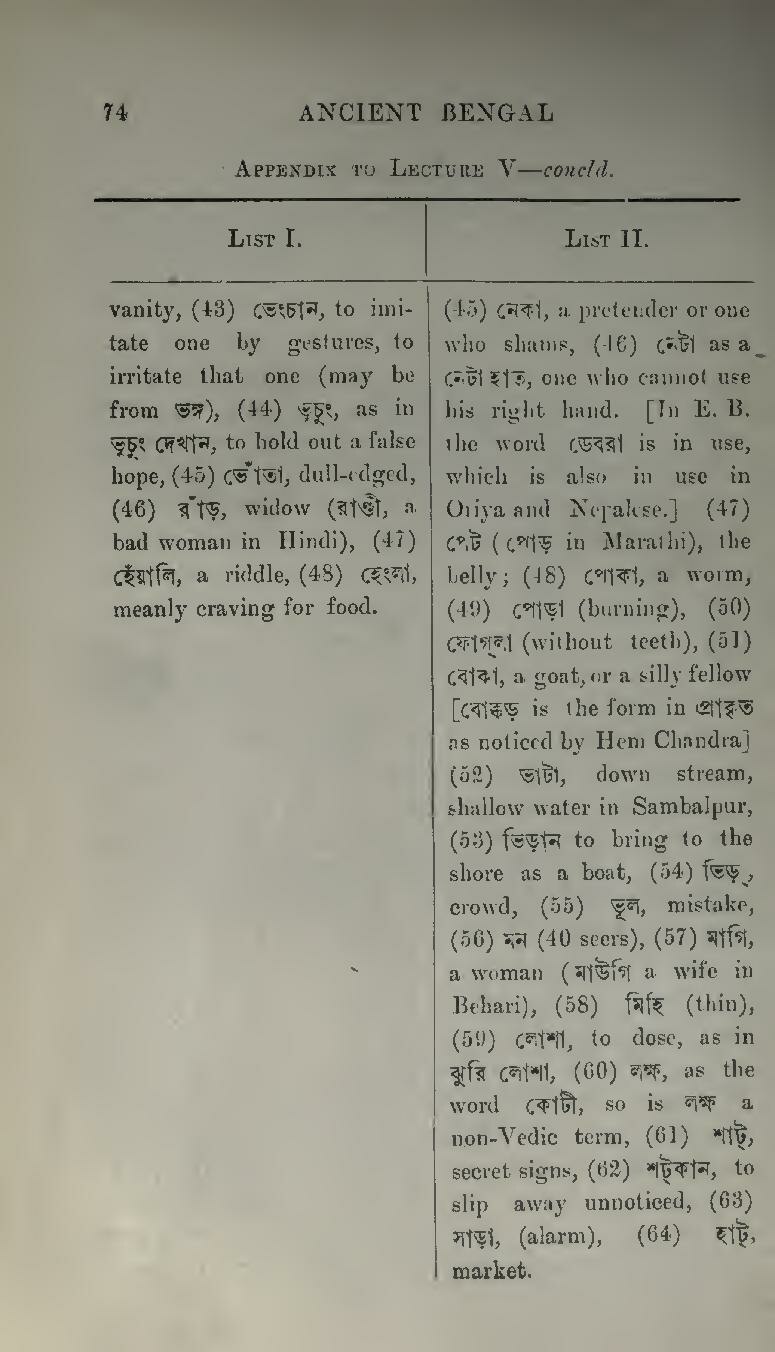74
ANCIENT BENGAL
Appendix to Lecture V—contd.
| List I. | List II.
|
| vanity, (43) ভেংচান, to imitate one by gestures, to irritate that one (may be from ভঙ্গ), (44) ভুচুং, as in ভুচুং দেখান, to hold out a false hope, (45) ভোঁতা, dull-edged, (46) রাঁড়, widow (রাণ্ডী, a bad woman in Hindi), (47) হেঁয়ালি, a riddle, (48) হেংলা, meanly craving for food. | (45) নেকা, a pretender or one who shams, (46) নেটা as a নেটা হাত, one who cannot use his right hand. [In E. B. the word ডেবরা is in use, which is also in use in Oriya and Nepalese.] (47) পেট (পোড় in Marathi), the belly; (48) পোকা, a worm, (49) পোড়া (burning), (50) ফোগ্লা (without teeth), (51) বোকা, a goat, or a silly fellow [বোক্কড় is the form in প্রাকৃত as noticed by Hem Chandra] (52) ভাটা, down stream, shallow water in Sambalpur, (53) ভিড়ান to bring to the shore as a boat, (54) ভিড়্, crowd, (55) ভূল, mistake, (56) মন (40 seers), (57) মাগি, a woman (মাউগি a wife in Behari), (58) মিহি (thin), (59) লোশা, to dose, as in ঝুরি লোশা, (60) লক্ষ, as the word কোটী, so is লক্ষ a non-Vedic term, (61) শাট্, secret signs, (62) শট্কান, to slip away unnoticed, (63) সাড়া, (alarm), (64) হাট্, market. |
